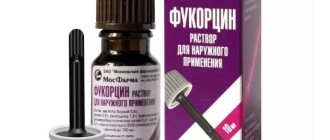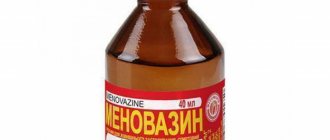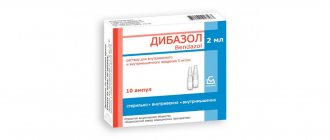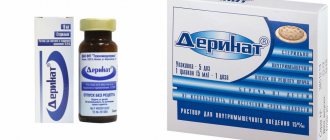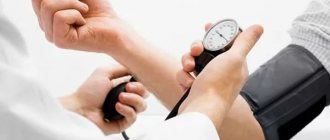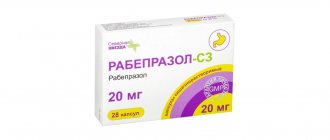Zelenka is the popular name for a solution of brilliant green, which has been used since the 19th century as a strong antiseptic. This is a topical drug that gained popularity in the form of an alcohol solution, but over time it began to be produced in the form of medical felt-tip pens.
Pharmacodynamics and pharmacokinetics
Brilliant green is antiseptic used exclusively for topical (external) use. The drug has antimicrobial effectiveness aimed at destroying gram-positive microorganisms, and a fungicidal effect aimed at certain strains of pathogenic fungi . Not characterized by irritant , analgesic or anti-inflammatory effects.
Due to its limited external influence, there is no information about the absorption of drugs into the bloodstream and its further participation in metabolic or biochemical processes in the human body.
How does greenery work?
Brilliant green has an antimicrobial effect, but it is practically not absorbed into the body and does not damage tissue . Therefore, it is applied even to open wounds. The presence of ethyl alcohol in the composition only increases the effectiveness of this product. At the same time, it is very cheap and easy to use.
Contrary to popular belief, brilliant green does not cure chickenpox at all. Initially, doctors used a bright dye to mark existing pimples and fix new ones. This helped determine when the patient became non-infectious and monitor the recovery process.
Many mothers consider brilliant green a cure for chickenpox
Interaction
There is incompatibility of the solution with local disinfectants, including chlorine , active iodine and alkalis (including ammonia ).
Due to the limited influence of the drug, it is not possible to establish the facts of its effect on the pharmacodynamic and/or pharmacokinetic parameters of other drugs.
Mad Ignatz
In the mid-nineteenth century in enlightened Europe, every tenth woman in labor died from puerperal fever. Despite the fact that the births were not attended by any midwives, but by certified doctors.
A young obstetrician at a Vienna hospital, Ignaz Semmelweis, was terribly worried about his patients and tried to understand the reasons. And I came up with the idea: doctors at that time practiced a lot in the autopsy room. They often resorted to delivering babies directly from the corpse, wiping their hands with handkerchiefs. Ignatz decided that they were infecting women in labor with “cadaveric poison.” And he suggested that before approaching the woman in labor, keep your hands in a bleach solution. Mortality decreased by 7 times.
But Semmelweis’s colleagues did not accept Semmelweis’s newfangled ideas; they laughed at him and bullied him. Even the death of the German doctor Gustav Michaelis did not convince the medical community. He laughed at Ignatz’s ideas, but decided to test them in practice. And when the mortality rate among his patients also dropped significantly, he could not stand the humiliation and committed suicide.
And poor Ignatz also ended badly: first he ended up in a mental hospital, and soon died, ironically, from sepsis, the same thing that patients were dying from before his brilliant insight. Later, grateful descendants, however, erected a monument to him. This is what we can do.
special instructions
When using the drug to treat skin areas adjacent to the eye, you should avoid applying it to the mucous membranes .
Zelenka for Chickenpox
Most likely, most people have childhood memories that include brothers, sisters, friends and classmates simply covered in green circles all over their bodies. At the same time, the word “ Chickenpox ” immediately appears in my head.
Chickenpox , or more correctly Chickenpox, is a viral disease caused by exposure to Varicella Zoster and characterized by the development of fever and the appearance of a benign papulovesicular ( vesicular ) rash . This painful condition is quite contagious, and therefore most people experience it, and, as a rule, in childhood, when this virus , unlike adult patients, most often does not cause any serious complications.
In the countries of the post-Soviet space, where such a drug as Zelenka was actually distributed, there was a practice of lubricating blisters with a solution of Diamond Green, and this was done solely for the purpose of determining the stage of the disease , after which the patient did not pose a threat of infection to other people. As was noted, the “ infectiousness ” of a patient with chickenpox passed 5 days after the formation of the last rash vesicle , and Zelenka served as a kind of indicator of the appearance of this very final vesicle , that is, no new places for using the solution appeared, which means that after 5 days there is no fear of the spread of infection .
However, to this day, forum topics are being created in which the question is clarified whether it is possible to smear Zelenka on a rash that occurs with chickenpox and whether this should be done. The answer to this question is quite simple and is determined by the phrase “yes, it is possible, but not necessary,” since it is not possible to cure or somehow influence the virus using external means.
How to wash brilliant green from skin and how to remove brilliant green from clothes?
As a rule, a few days after using Zelenka, the stains left by it disappear on their own in the process of daily washing and work of the skin's sebaceous glands . Of course, it is better to wait for the natural disappearance of unwanted staining with the drug than to scrub Zelenka using various chemical compounds, thereby damaging the skin .
However, in cases where you need to get rid of green stains urgently, any alcohol-containing solution , acetone , bleach, hydrogen peroxide , baking soda with the addition of vinegar or lemon . It is worth noting that you should immediately prepare for a labor-intensive and lengthy scrubbing process until the observed stains become barely noticeable. You can finally wash off the brilliant green with a scrub , rich cream makeup remover .
Often, when using a Brilliant Green solution, it gets on the clothes of the person using it and remains on it as a bright, difficult-to-remove stain, which is quite problematic to remove at home. There is no universal remedy for removing green stains, since different tissues react completely differently to certain chemicals .
For example, to remove Zelenka from cotton fabrics , you will need to soak things for 2 hours in a warm aqueous bleach with acetone followed by washing with laundry soap may be suitable .
remove stains from delicate fabrics using alcohol-containing products or table vinegar , and removing stains from woolen clothes without damaging them is possible only by prolonged washing with laundry soap .
Also recently, many stain removers , which supposedly can remove any unwanted stains without harming the quality of fabrics. In this case, we can recommend a thorough study of the components of such a product and instructions for its use, so as not to dissolve the delicate fabric along with the unwanted stain.
Zelenka: indications for use
Since brilliant green has shown itself to be an active antiseptic, it began to be used in the treatment of wounds and abrasions. Later it turned out that applying the solution to ulcers and acne of bacterial origin reduces the severity of the rash, and soon completely clears the skin of papules.
In this regard, brilliant green is used for:
- mechanical damage to the skin (abrasions, cuts, deep wounds);
- rashes caused by insect bites, in particular mosquito bites;
- weeping allergic rash;
- chickenpox infection;
- fungal infections of the mucous membranes;
- the threat of joining and spreading superinfection.
Zelenka, in addition to its ability to destroy pathogenic flora, also has a drying effect, so it is often used for weeping rashes and wounds.
The solution is used strictly topically; it is not intended for oral administration. Zelenka is used to treat the edges of deep wounds; it is applied to abrasions, covering, if possible, the entire damaged surface. For rashes, use brilliant green in a targeted manner, applying it only to the papules with a cotton swab.
Analogs
Level 4 ATC code matches:
Naftalan oil
Suporon
Naftaderm
Vinylin
Hydrogen peroxide
Potassium permangantsovka
Iodoform
Pantocide
Ectericide
Salicylic-zinc paste
Elekasol
Salicylic-Zinc ointment
Formalin
Formagel
Aseptolin
Xeroform
Vitaon
Olazol
Formidron
Octenisept
- Antisept;
- Medosept;
- Bioantisept;
- Bonaderm;
- Biosept;
- Vitasept;
- Hydroperite;
- Ichthyol;
- Xeroform;
- Manisoft;
- Methylene blue;
- Septile;
- Hydrogen peroxide;
- Alcohol;
- Sterillium;
- Chlorophyllipt;
- Pharmasept , etc.
Properties of brilliant green
Brilliant green solution is an antimicrobial drug that has an effective antiseptic effect and does not harm skin tissue.
An alcohol solution provides a double effect, because alcohol also copes well with pathogenic microbes.
Useful properties of traditional greenery:
- cauterization of wounds is more effective compared to the use of iodine or other antiseptics;
- treating wounds with such a solution can protect against the appearance of unsightly scars;
- the treatment has a milder effect;
- stimulates wound healing with slight drying of the skin;
- the product is not absorbed in large quantities.
If the rules of use are followed, brilliant green successfully copes with accelerated healing of wounds, harmful bacteria, staphylococcus, various pathogenic fungi and harmful diphtheria bacillus.
Reviews of Diamond Green Solution
Reviews of Zelenka as an antiseptic a priori cannot be negative. During the times of the Soviet Union and after its subsequent collapse, the choice of antiseptic agents was quite small and was mainly carried out between Hydrogen Peroxide , Zelenka or Iodine , where the first place, deservedly, was occupied by the Brilliant Green solution. At the moment, the popularity of Zelenka has also remained at a high level, which suggests that this drug copes with its responsibilities 100%. Critical reviews of this drug arise only in connection with its “stainable” properties, the fight against which can indeed be quite painstaking.
How does iodine work?
Iodine causes blood flow to tissues, promoting their rapid regeneration. However, it dries out the skin greatly, and in large quantities can even cause a burn. Therefore, they should not treat the damaged surface itself. To avoid burns, apply iodine to the skin around the wound: this will prevent germs from entering.
Use the product only on minor scratches and abrasions. Large and deep wounds require different treatment. However, if there is no other antiseptic at hand, then iodine can also be applied to an open wound, after diluting it with water.
At the same time, iodine is indispensable when it comes to treating bruises, swelling and dislocations. By causing blood flow, it stimulates rapid tissue repair. Apply iodine in a grid to the damaged area and renew the “pattern” as it fades. In addition, iodine, due to its drying properties, perfectly fights acne.
Price for Diamond Green, where to buy
The price of Zelenka, depending on the volume of the container containing it and the manufacturer, ranges from 10-70 rubles.
- Online pharmacies in RussiaRussia
- Online pharmacies in UkraineUkraine
ZdravCity
- Diamond green solution d/out.
approx. alcohol. with spatula 1% 25 ml ZAO PFK Update 92 rub. order
Pharmacy Dialogue
- Brilliant green solution 1% 10ml cap with spatulaUpdate PFC JSC
71 RUR order
- Brilliant green solution 1% 10mlYAPF
22 RUR order
- Brilliant green solution 1% 25mlSamaramedprom
19 rub. order
- Brilliant green solution 1% 10mlSamaramedprom
11 rub. order
show more
Pharmacy24
- Brilliant green (zelenka) 1% 20ml solution PAT NEC "Borshchagivsky chemical-pharmaceutical plant", Kiev, Ukraine
6 UAH. order - Marker bottle Flomed brilliant green 3 ml TOV "AFALINA", Ukraine
15 UAH order
- Brilliant green (zelenka) 1% 20 ml solution TOV DKP Pharm.Fabrika, Ukraine
4 UAH order
- Brilliant green (zelenka) 1% 25 ml solution PAT "Galichfarm", Ukraine
12 UAH order
Composition of brilliant green
The basis of brilliant green is an alcohol solution, which is obtained exclusively synthetically.
The composition of this popular product:
- Brilliant green – 1 gram per 100 g.
- Ethyl alcohol - about 99-100 ml, or approximately 60% per 100 g.
The composition of the product depends on its form of release for sale. The most famous type is an alcohol solution, produced in bottles of 10-15 ml.
The product can be used for two years after release.
In modern pharmacology, a diamond marker and a special dry powder have also been invented.
If necessary, the prepared powder is diluted with plain water before use in an acceptable concentration of the drug from 0.1% to 2%.
A marker soaked in this solution is the most convenient form and is used to treat small wounds, scars and emerging pimples.
The marker allows you to do without the usual cotton wool, does not stain your hands and is a product that is very convenient to use.
Also today, the product is available in the form of sprays or in small bottles with a pipette, which ensures ease of use.
Interesting! Previously, doctors used dyes for their work purposes. Various preparations were stained using these means to better examine the life of microorganisms under a microscope. Suddenly, doctors discovered that brilliant green dye destroys microbes with high efficiency. Since then, this effective antiseptic began to be confidently used in everyday medical practice, and even today it is in no hurry to give way to analogues.
Getting rid of green stains
Persistent green stains on the surface of a person’s skin or clothing are a very unpleasant consequence of using green paint.
To eliminate it, it is recommended to try to wash the stains with hydrogen peroxide or alcohol-containing products. Also, chemical acetone or regular bleach are quite suitable for this.
Rubbing brilliant green with such means is only possible from completely healthy skin to prevent burns.
The task of removing stains from clothes is more difficult, because this drug is a very stable dye.
Professional dry cleaning can help remove stains from fabric. Contaminants are removed from cotton materials using bleach and acetone.
For other fabrics, modern stain removers are used, which are made specifically for a specific type of material.
